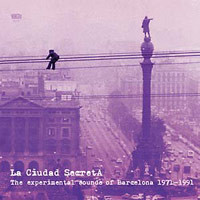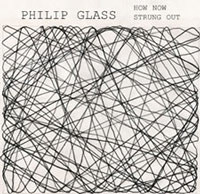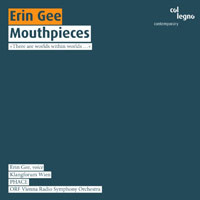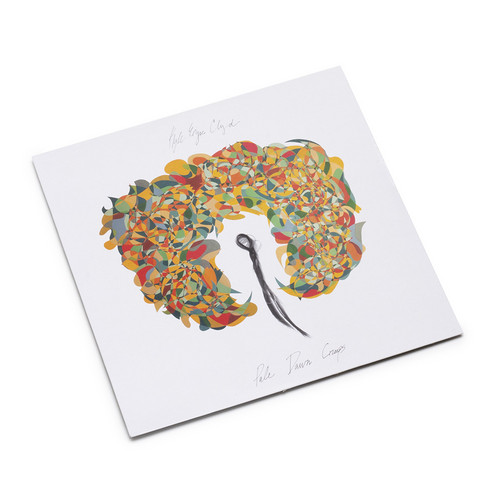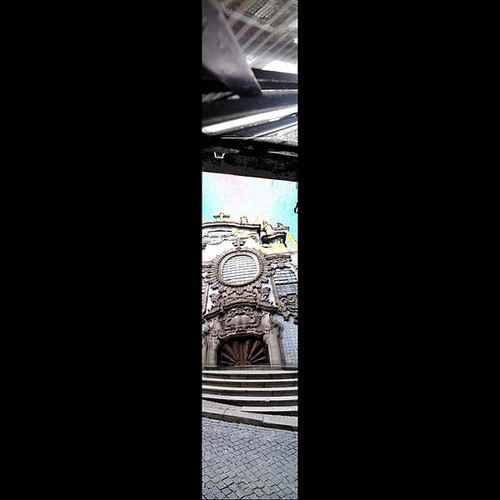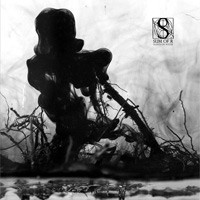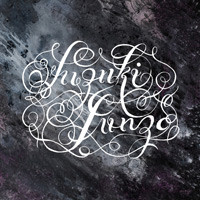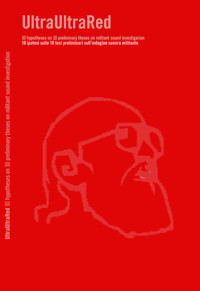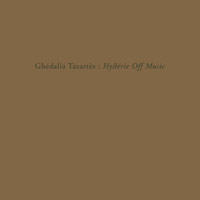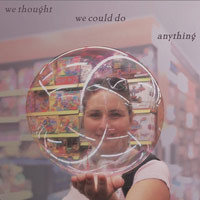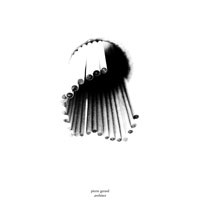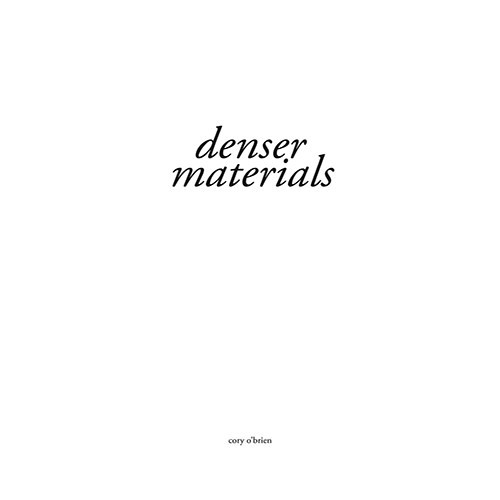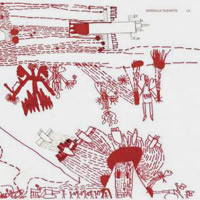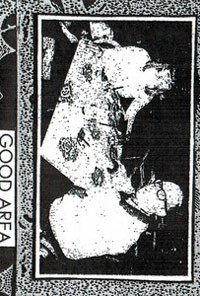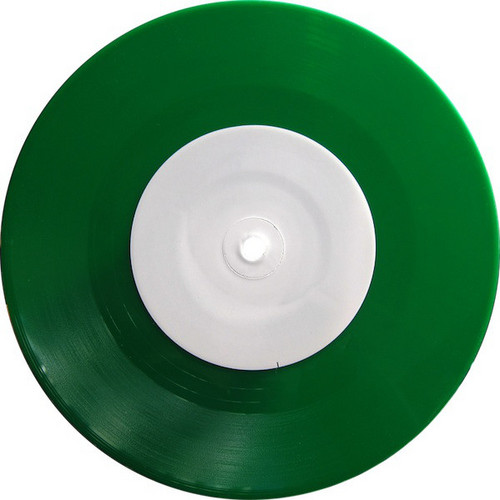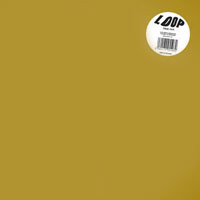La Ciudad Secreta: The Experimental Sounds of Barcelona 1971-199
At the end of the 1960s, perhaps due to its proximity to Paris, Barcelona had become the forefront of the avant-garde and the entryway in Spain of new forms of cultural expression from Europe and the United States. Musically, that characteristic resulted in a middle-class underground that would play the part of a late local counterculture which gave birth to the so-called Barcelonés progressive rock of 1969-1973. It featured bands such as Máquina!, Om, Música Dispersa, and so on. Material from t…
How Now/Strung Out
"Every new musical language requires new performance skills. Works such as HO NOW and STRUNG OUT were, in effect, pieces written to develop these skills which include stamina, sustained concentration, and an ability to play continuously in an easy and relaxed manner." - Philip Glass
Mouthpieces
In a laid-back manner and with apparently effortless ease the American composer involves her entire vocal apparatus in the making of music. And the way in which she integrates other musicians into her elaborately detailed cosmos of sound makes listening a rare treat and attests to a special talent. The musical elements revolve around each other, imitate each other, take turns. The intimate and familiar sound potential of the oral cavity is operated with brilliant skill to reveal a multitude of d…
Non-fiction
Death Blues is a multi-disiplinary project by Jon Mueller that addresses the inevitability of death as impetus to become fully present in each moment. “Non-fiction” is the third musical installment in the larger Death Blues project, and the first for SIGE Records. “Non-ficiton” opens with a a single and insistent pulse, the foundation upon which two side-long pieces that comprise the album are built. Serving as a thematic anchor, the rhyth- mic cycles propelling the compositions are the albums l…
Pale Dawn Creeps
Pale Dawn Creeps by Kyle Eyre Clyd is a haunting excursion into drone, minimalism, and environmental sound, merging introspective textures with the spectral legacy of the American experimental underground.
Numinal Entry
** Edition of 300 ** This is the second release from the Halatern, Etc. label, run by Keith Connolly (of NNCK/No Neck Blues Band fame). Tom Carter requires no introduction (those who are curious are encouraged to visit the historically rich wholly-other.com). Of late, his Kazuyuki K. Null meets Franco Falsini excursionary instrumentalism has taken on an increased luminosity, due in no small part to some unexpected time spent at a certain house on the borderland. In his own words: "Information-in…
Lights on Water
Lights on Water is the second Sum of R album on Utech Records after their self titled debut, and the first full-length as the duo of Reto Mäder (bass guitar, electronics, drums, piano, samples) and Julia Valentina Wolf (guitar) after the Ride Out The Waves EP. The album finds the Swiss duo discovering their roots within a prehistoric ceremonial context. Those roots go back to times where the sounds of nature were reigned in, ritualized and utilized as food for the soul. They are the cries…
Portrait of Madeleine Elster
Portrait of Madeleine Elster is the third solo album for Utech Records by Japanese psychedelic troubadour Suzuki Junzo. A 21st century drone/space electric-blues album in the style of Ode to a Blue Ghost and Eight-Sided Infinity. Crystalline guitar passages soaked in reverb and distorted sadness. Junzo is joined by Ikuro Takahashi of LSD March, Kousokuya and ex-drummer of Fushitsusha and High Rise.
Ultra-Red: 10 Hypotheses on 10 Preliminary Theses on Militant Sound Investigation
2014 release ** "UltraUltra-red, 10 hypotheses on 10 preliminary theses on militant sound investigation is a CD+booklet, the final act of a workshop. The 6 month process led to the creation of a database of sound-fields and texts-recorded tracks developed to build 10 sound pieces/hypotheses by 10 young artists. The publication is the first Italian translation of the important manifesto/source text 10 preliminary theses on militant sound investigation by the american collective Ultra-red, further…
Hysterie off music
At the beginning, Hystérie off Music was conceived as a catalogue record, an open field where the author could play with all musical genres and their stereotypes, but then evolved rapidly into an uncompromising clash of field recordings, sampled instruments and Tazartès' incomparable vocal eclecticism, made of emotional psalms and shamanic hymns. The Encyclopédie of genres turns into a childish - and sometimes scary - play and the song titles mislead the listener introducing him to a c…
We Thought We Could Do Anything
Collaborating with drummer Brian Chase (Yeah Yeah Yeahs, Man Forever), guitarist Alan Licht (Lee Ranaldo & the Dust, The Blue Humans, Love Child, Run On, etc.) is back for another release on New Images Ltd. We Thought We Could Do Anything is a far less literal take on spontaneous dialogue than his “talk-rock” project Title TK, whose album / sleeve / book Rock$ was published in 2013. Impressive pedigrees aside, Licht and Chase are a real-deal pairing; each has a longstanding involvement in underg…
Red One
After the last If, Bwana (Al Margolis) release on Pogus the large-scale double cd E (and Sometimes Why), this brand new If, Bwana recording is a little more intimate. This release consists of six smaller works for one or at most two instruments - with the instruments all being multi-tracked for a denser, deeper sound. Red One features performances by stalwart experimental/avant musician/composers such as Nate Wooley, trumpet, on Toys for Al (with Al Margolis on toy trumpet); Ellen Band's vocals …
Architect
Three studies on what surrounds us and which remains sometimes invisible.
Denser materials
Performed by Cory O’Brien using snare drum, amplified plexiglass and analog synthesizer. Recorded in Spring/Summer 2013, Washington, DC.
Everything Is Shit. Punk In Brussels 1977-79
An incredible energy took over Brussels at the onset of the Eighties. It is a strange and rare feeling when you tell yourself that something is happening. And it always happens through an accumulation of very small facts. Then, suddenly, it is there. This collection basically attempts to capture this emerging will. But before that, there was punk rock. In Brussels, it was a handful of venues, improvised concerts, a few dozens of people recognizing each other, and a festival that gathers everyone…
La
Finally restocked, outstanding new LP by French experimental sound artist featuring seven tracks recorded at Ghédalia Tazartès' home studio and inspired by the artist's trip to Oslo in 2013. Limited to 500 copies
Pronunciation
Lo-fi real time sound collage… Archaic rhythm machine, stream of consciousness guitar, voices, cassette cutup/manipulations. Human Machinery Sci-fi Sound.* Kitchen sink sound poetry and crude, no mixer tape collage across two tracks and thirty minutes. Raw basement ambience and dirty amp hum.
Bestiario vol.3
Bestiario is a series of short Enrico Malatesta compositions for acoustic percussions, recorded live with no overdubs or editing; these pieces are meant to explore a multi-directional sonic dimension, still keeping a high level of tension. All the studies in the series feature extremely dense micro-structures, broken rhythms and fast tempi. The third and last volume of the series is composed by two pieces for cymbal, frame drum, bow and the crackling effects between the cymbal's edge and the ski…
Fade Out
*Expanded gatefold reissue of Loop's head-burning 2nd album* The band's 1989 LP was their second album proper, following on from their 1987 debut Heaven's End and The World In Your Eyes compilation released in 1988. By this point the band's line-up was all-but unrecognisable from its original roster, with both bassist Glen Ray and drummer Bex having been replaced, and yet the music policy remained very much on course for Fade Out. A variety of studio tricks heighten the sense of experimentation …
Untitled
2LP Edition with insert and printed inners - featuring exclusive material from Mark Fell, Bass Clef (Some Truths), Miles Demdike and Joane Skyler. Collecting four acutely contrasting live presentations by Mark Fell, Miles Whittaker, Some Truths (Bass Clef), and Joane Skyler, recorded in Bäsel, Switzerland, 28th September, 2013 for the closing party of Thomas Baldischwyler's 'Hot Knobbing' installation at Oslo 10. The record presents 12+ minute tracks from each contributor's set yielding very dif…
